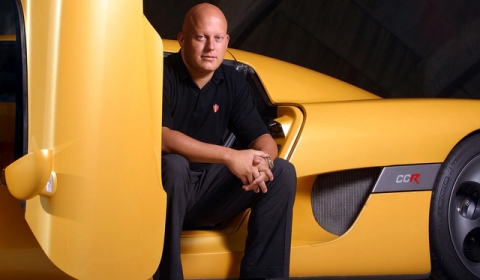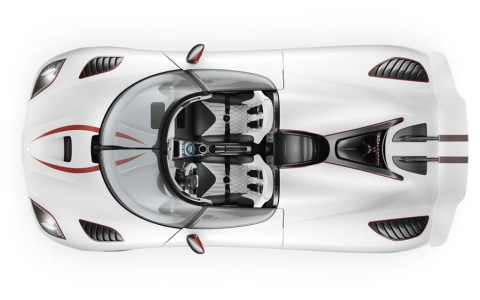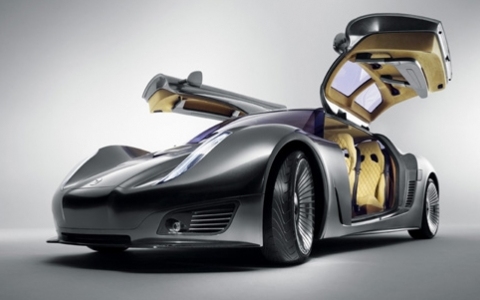
Christian von Koenigsegg is the founder of the Swedish high-performance automobile manufacturer Koenigsegg Automotive AB. Christian von Koenigsegg was born in Sweden in 1972 to a family of ancient German ancestry.
When Koenigsegg was five years old he saw the Norwegian animated film Flåklypa Grand Prix; in the movie a local bicycle repairman makes his own racing car. This gave Koenigsegg the dream of creating the perfect sports car. After several years of planning he launched the Koenigsegg project in 1994 at age twenty-two. Designer David Craaford provided a design concept following Koenigsegg’s guidelines. A tight-knit group was gathered and a prototype was assembled, the success of which enabled the foundation of Koenigsegg Automotive AB.
Both Koenigsegg and his wife, Halldora von Koenigsegg, are active in the company’s management. He is known in the industry as a quality-obsessed car enthusiast with a record of technological innovation. GTspirit caught up with him to talk about the latest Agera R and what it is like to build hypercars anno 2011.

What was the biggest challenge in the development of the Agera?
Christian: When developing a hypercar like the Agera it was our aim to bring everything in harmony. Normally it is very challenging to bring everything together but the development of the Agera went quite smooth. It was well received by the public and we currently have nearly a year waiting list for the Agera and Agera R.
Where can people find Koenigsegg around the world?
Christian: Koenigsegg is present in nearly all major markets. We have recently opened dealerships in two of the most important emerging markets; India and China. The Middle East is still one of our most important markets, we have dealerships and partners in Saudi Arabia, Kuwait, Qatar and the UAE.
How many Koenigseggs are there around the world?
Christian: 83 at the moment, we hope to break the magic 100 mark this year. We now only produce the Agera and the Agera R and have a waiting list of nearly a year. It takes roughly 14 weeks to build one Koenigsegg.
How does a small niche manufacturer like Koenigsegg cope with increasing environmental demands?
Christian: The environmental demans offered us not just challenges but also opportunities. Being environmental friendly offered us racing advantages. We prepared our latest models to run on E85 biofuel. The ethanol in biofuel firstly has the positive side effect of cooling the combustion chambers, as well as a higher octane value, well over 100 RON, which gives the high power.
Will future supercars be electric, hybride or still petrol powered?
Christian: I’m confident we will see a mix of those. We will continue development to improve performance and increase efficiency.
Last year Koenigsegg was involved in the development of the NLV Quant, a four-seater solar electric car. What was your involvement in the project?
Christian: NLV approached us to do the design for the Quant and that’s what we did. It was never a full-blood Koenigsegg and it will be developed as the NLV Quant.

What cars do you own/drive in the private life/daily life?
Christian: Saab 95
What is your dream car besides your own creation?
Christian: Citroen DS convertible of the 1960s
How do you look back at the appearance on Top Gear?
Christian: It was crazy, our first appearance was with an untested prototype. After the Stig spun off the track we set it up properly and added a small wing which immediately set the fastest lap time when we returned to the Top Gear test track.
Will we see the Agera on Top Gear any time soon?
Christian: We would love to see how fast the Koenigsegg Agera or Agera R is around the test track. Its hopefully just a matter of time before the Agera will take on the Top Gear test track.
Will we see a second Koenigsegg model next to the Agera soon?
Christian: Not yet, but we would like to develop a second model next to the Agera in 3-4 years time.
Thank you!
















Although it was fun reading how Koenigsegg are solely focused on their products, and products performance.
It would be nice to also know more of how Koenigsegg management work, interact, etc. Some company info would be nice :)
Petra
“To a family of ancient German ancestry.”
You need to be more specific, were his parents Germans who immigrated to Sweden who had lived in Germany since ancient times or did he have 1 ancient German ancestor centuries ago who married a Swedish woman and and the name only carried along with male line who married Swedes?
If the latter is the case (which it probably is) then he’s only a very very tiny percent German (less then .00001 percent). Every generation the ancestry splits in half but the surname carries on with the sons, so if his ancient German ancestor married a Swedish women and their sons married a Swedish woman and so on and so fourth it would take only 7 generations before you share less than 1 percent of the German ancestry with original full-German ancestor (0.781% to be exact).